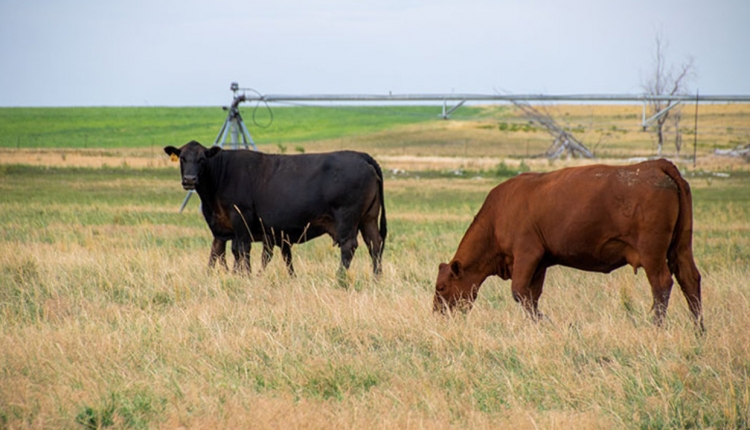The author is a rancher, author, speaker, and consultant with over 40 years of experience in grazing management research, outreach, and practice. He has lived and grazed livestock in hot, humid Missouri and cold, dry Idaho.

There are two basic approaches to setting up a grazing cell: fixed and flexible. A fixed grazing cell has a set number of permanent paddocks created with permanent fence and generally has permanent stock water available in every paddock. A flexible grazing cell consists of a framework of permanent fence with temporary fences used within to create individual paddocks. Often, a flexible grazing cell also uses movable water troughs.
The primary advantages of fixed grazing cells are daily labor is minimized for moving livestock and they are low-cost per acre on larger properties. The primary disadvantages are they can be quite expensive per acre on smaller properties, and the number and size of the paddocks are always the same, which limits grazing flexibility.
A flexible grazing cell will typically have lower capital cost for fence and stock water infrastructure. The greatest advantage is the ability to change size of the paddock depending on feed availability. This goes back to the principle that time management is more important than spatial management when implementing management-intensive grazing.
I would far prefer the ability to allocate uniform feed on a daily basis by changing the size of the paddock compared to changing how many days the herd stayed in one paddock based on how much feed was available in a fixed-size paddock.
We started out in the 1980s using almost entirely the fixed grazing cell approach. From the outset, we used electrified 12.5 gauge high-tensile (HT) fences for our permanent subdivisions. Because I had grown up in the five-strand barbed wire paradigm, we initially put in three and four-strand HT fences for cattle paddocks. Within a few years, we had dropped down to just two wires and now often just put in a single HT wire for permanent fencing.
The low cost of one or two-wire HT fencing is what makes fixed grazing cells affordable in contrast to using barbed wire. Installed HT fence typically costs only about 20% of what old-fashioned barbed wire costs.
Flexible offered options
By the early 1990s, we were beginning to understand that flexible grazing cells made a lot more sense than fixed grazing cells, except on the largest ranch properties. We found ourselves going into a lot of our fixed paddocks and doing further subdivision with polywire to fine-tune our grazing strategies. It was soon realized that we could eliminate 80% of our permanent fence cost by creating long, narrow grazing corridors rather than multiple permanent paddocks.
At the University of Missouri Forage Systems Research Center, we set up a lot of our grazing cells with just 300- to 400-foot wide corridors. We created the further subdivisions for one- to three-day grazing periods with polywire. Those short lengths of polywire could be taken down and set back up for the next move in just five to 10 minutes.
Part of the reason for the narrow corridors is because we generally had at least 15 to 20 herds of cattle on research projects, so the herds were small, and the allotted pasture areas had to be sized accordingly.
One of the fundamental principles of grazing management is to minimize the number of herds you are running, which improves labor efficiency and lowers the infrastructure cost per head. On our personal farm in Missouri, the corridors were 400- to 660-feet wide. Because of the rectangular survey system, 660-feet corridors worked out very nicely when the land was open in 40-, 80-, or 160-acre parcels. When the land was cut up by creeks and was more rolling, the corridors will tend to be a less uniform width.
A pivot plan
On the ranch in Idaho, we graze two center pivots. The big pivot is 300 acres with a distance from pivot center to the outer reach of the end gun of about 2,040 feet. We created two circular grazing corridors by building a near-circular fence halfway between the pivot center and outer reach. Our stock water points are located at 1,000-feet intervals along the inner circle fence.
Every time I move polywire fences on this flexible cell, it is over 1,000 feet, which is a little longer than I prefer. A paddock shift where I take down a fence and then reset it for tomorrow’s move takes me about 30 minutes.
If we were starting from scratch on a pivot this size, I would make three circles, with each being 680-feet wide. That is a more pleasant length of fence to move daily. Our other pivot is just 150 acres, and the fence lengths are about 740 feet. Those paddock shifts only take me about 15 to 18 minutes.
Flexible grazing cells have a lot of advantages and are the preferred choice by most serious graziers.
This article appeared in the February 2022 issue of Hay & Forage Grower on page 12.
Not a subscriber? Click to get the print magazine.

